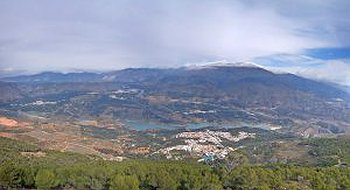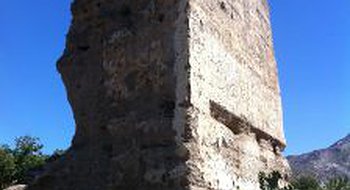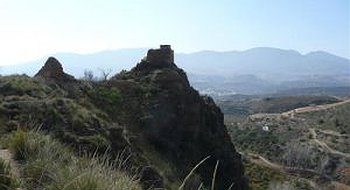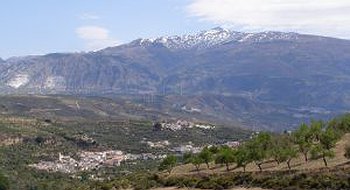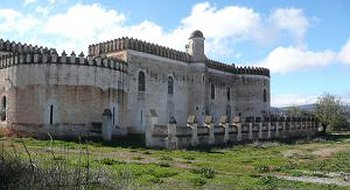Moorish rebellion
On 26 September 1568, Don Fernando de Córdoba y Válor, today known as Aben Humeya, was crowned in Béznar (Granada) as King of the Moors who had taken up arms against the impositions and the non-fulfilment of the Capitulations signed by the Catholic Monarchs and Boadil el Chico. Don Fernando was a descendant of the Umayyad family, and thanks to the treaties of Capitulation he had already been born a Christian in 1541.
When all negotiations had failed between the Moors and the court, and faced with the imposition of the Inquisitor General, Cardinal Diego de Espinosa, rebellion broke out in the villages of the Lecrín Valley, Murtas, Béznar and others, spreading rapidly towards the Alpujarras in Almería; then Don Fernando de Córdoba y Válor abjured his religion imposed by Castile, and joined the Muslim religion practised by the Moors or Mudejars. Immediately the bloody reprisals began, murdering hundreds of Christian friars and priests, at the same time as they were answered with their own law, flooding the ravines and streams of the Alpujarras with blood.
In an attack by the Castilian troops on a Muslim castle, a beautiful woman was taken prisoner, who, with an alfarje in her hand, fought like a panther, while her eyes sparked with sparks. When the Marquis of Mondejar, head of the royal troops, which numbered more than twenty thousand soldiers, heard of this, he wanted to speak to the young woman, and was extremely surprised that the girl, who was now called Dala Suri and who was once called Dolores when she was a Christian, spoke perfect Castilian. She spoke perfect Spanish, being a native of the village of Cónchar, a fighter for the cause of the rebels. From her own lips, she learned that she was the favourite of the new king of the Moors, now known as Aben Humeya.
The Marquis discussed the case with Cardinal Don Diego de Espinosa, and they agreed to give the rebels a coup de grace, making them see that Aben Humeya's own favourite had asked to enter as a novice in the Convent of Zafra, at that time almost recently built.
In the aforementioned convent on the Carrera del Darro, the young woman was confined for days at a time, her wrists bound so that she would not attempt suicide or harm the other nuns. Through a small window facing the Torre de Comares, the young girl watched the hours go by, contemplating what was once the Court of the Muslim Kings.
One cold morning, a nun, her eyes already hardened by many years of imprisonment within the four walls of the convent, came to announce to her with a joyful face that Don Fernando de Córdoba y Válor had been assassinated by personal adversaries within the ranks of the rebels themselves.
Her face lost its charm and colour, her hair soon turned white and her eyes, those eyes that once frightened even the Christian soldiers, lost their light, they were now two large eyes but almost dead. She ate only what was essential to avoid dying and although it was obligatory to enter the chapel every day to pray, she never did so, and they even whipped her to force her to do so, but no one could overcome her resistance.
On the other hand, the military and political forces that dominated the city, spread the rumour that the young favourite girl, repentant of her desire to return to being a Muslim, had taken the habits of the nuns of the aforementioned convent, when this was never true. Enclosed in her pain and her silence, Dala Suri dedicated herself to taking care of the many girls who were forced to become nuns, because in the Catholic Spain of the time, it was said among the wealthiest families that one had to dedicate a son to serve in the army and a daughter to serve God from inside the convent.
She died within the convent when she was only a few years old and her remains, like those of all the nuns in prison, went to sleep the eternal sleep in the small cemetery in the convent's courtyard.
If you want to visit the Lecrín Valley to discover these wonderful places, we have a wide variety of accommodation, beautiful rural houses and hotels to choose from; to eat there are different restaurants to choose from, and if you are looking for something different, our active tourism companies offer you all kinds of activities and sensations. We are the Rural Tourism Association of the Lecrín Valley. www.turismovalledelecrin.com
GO TO BLOG

